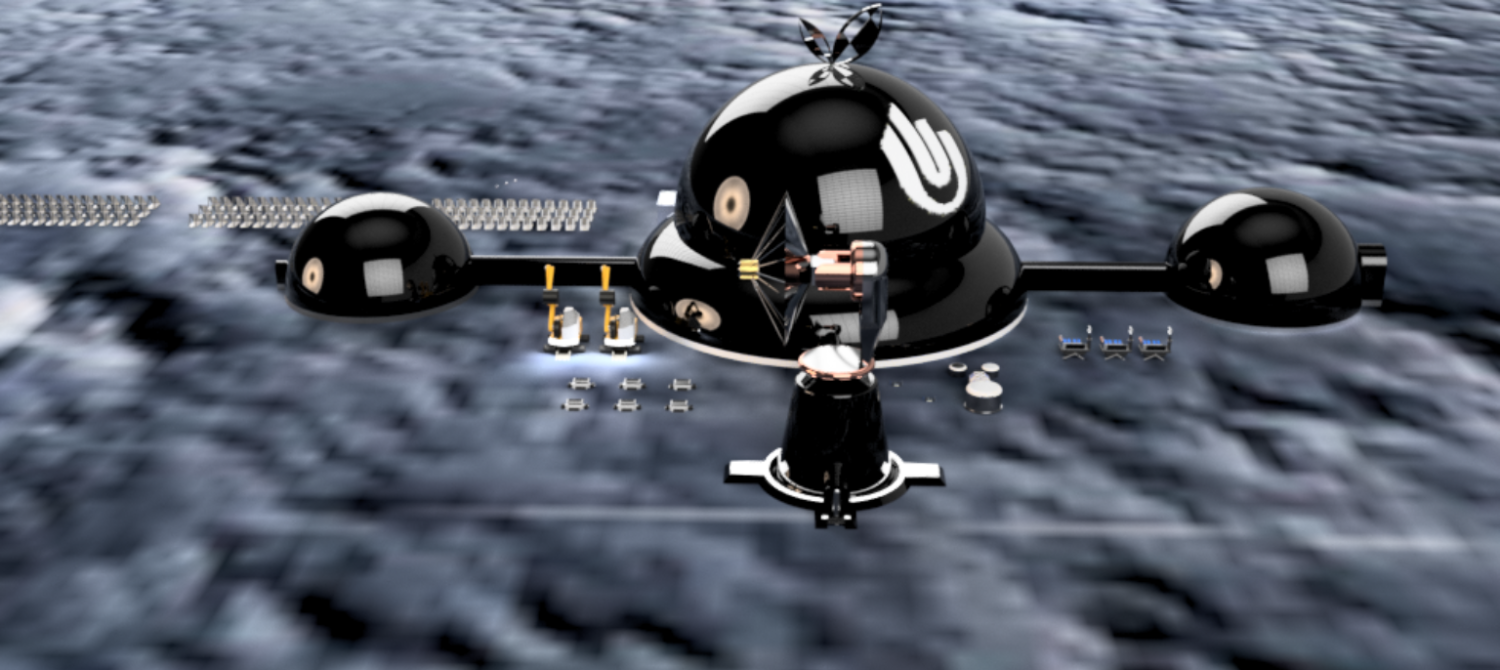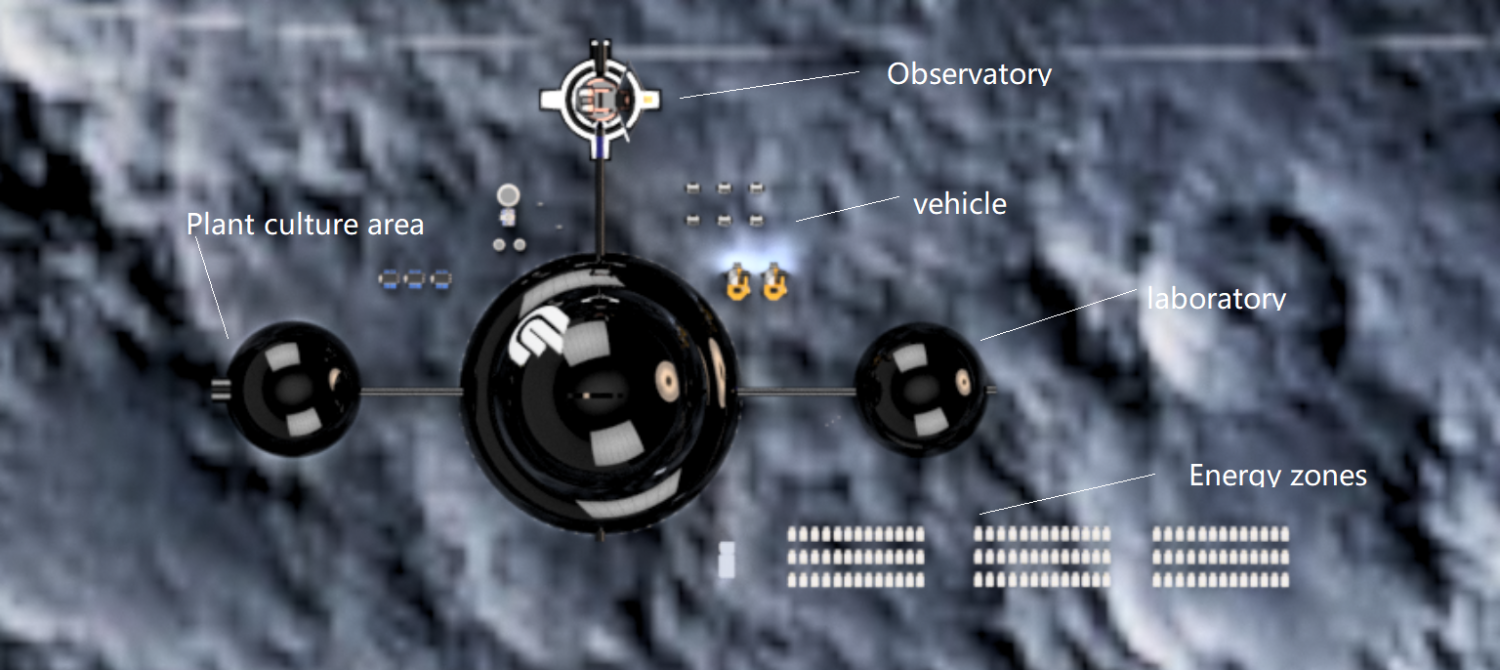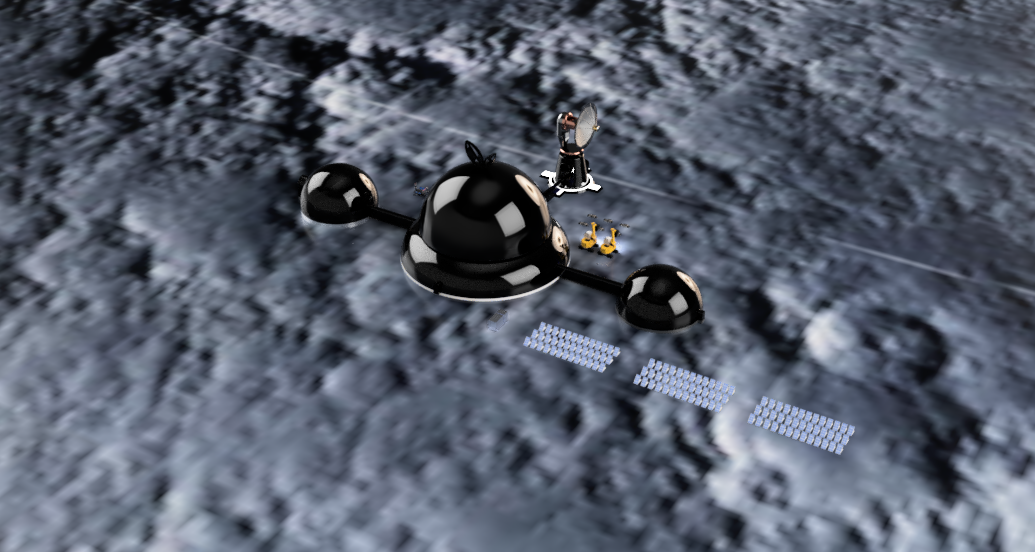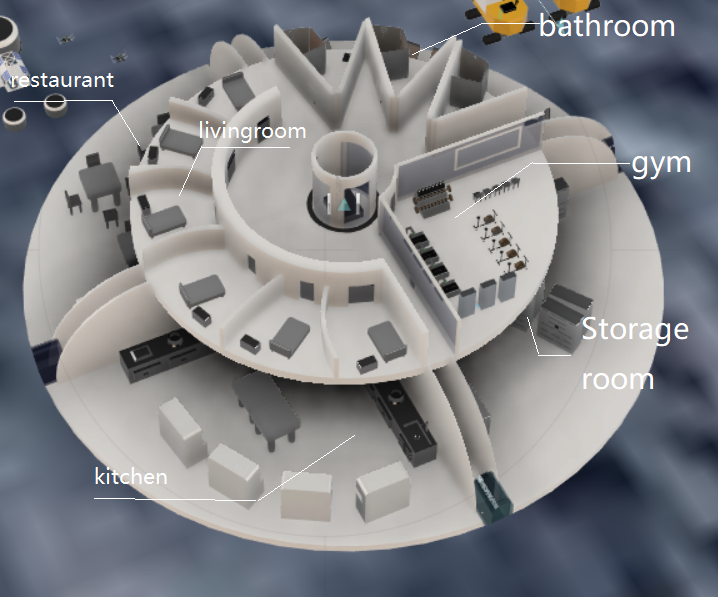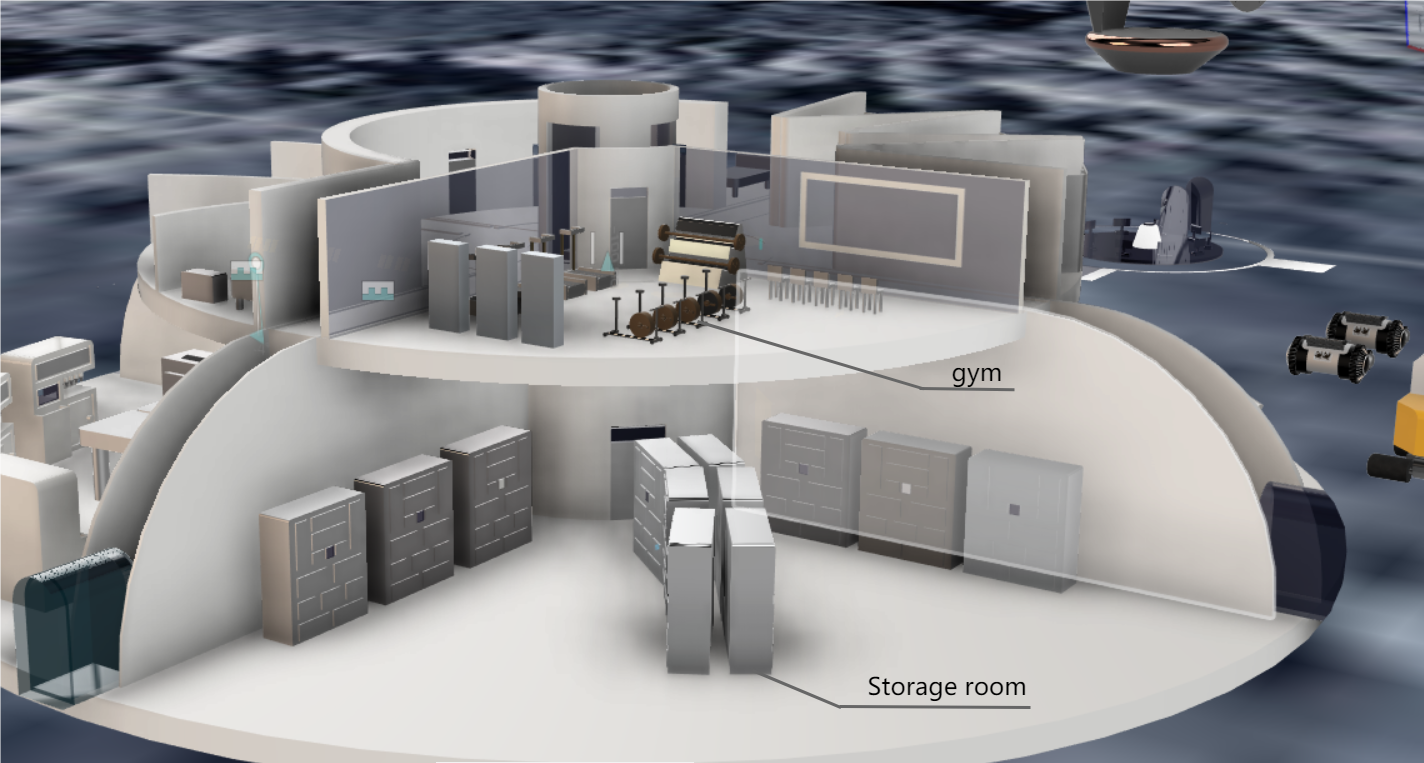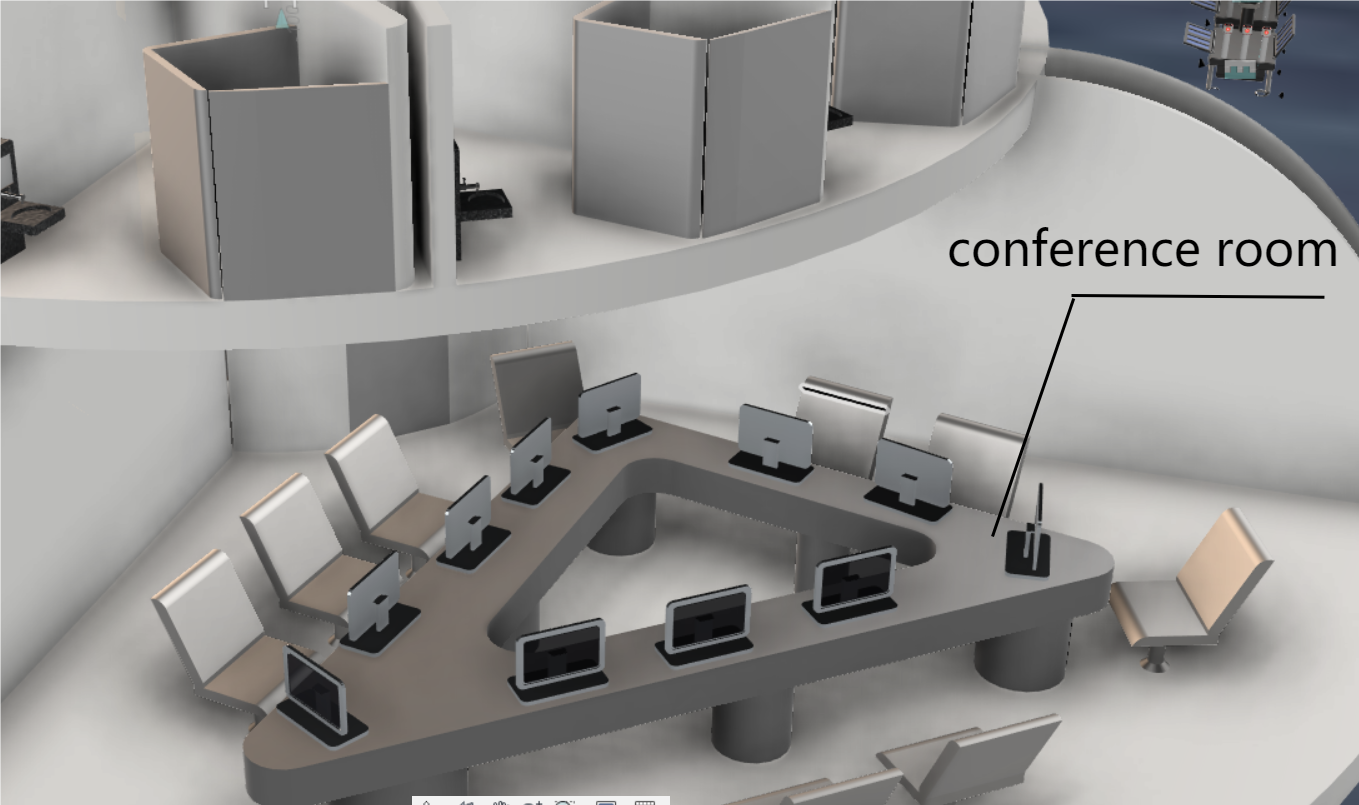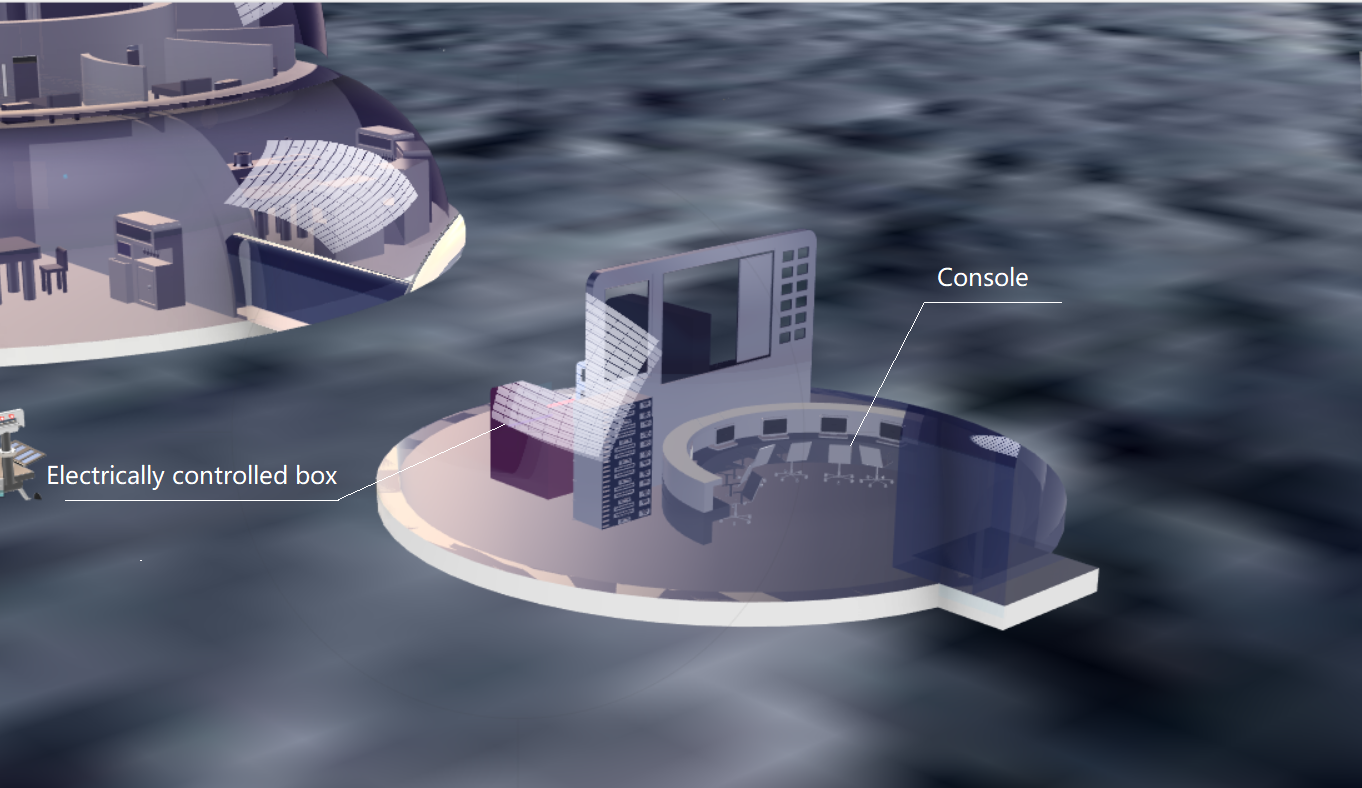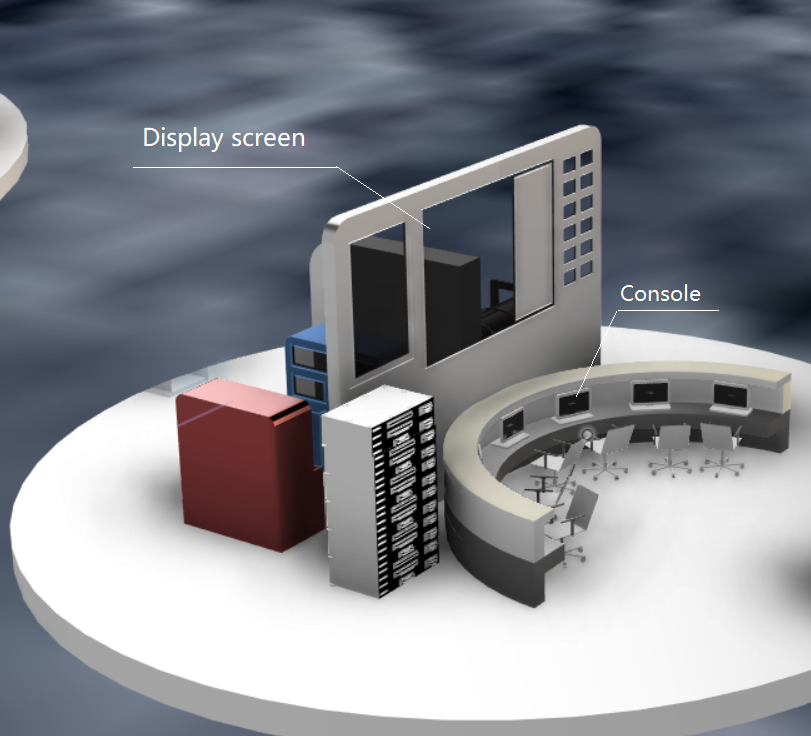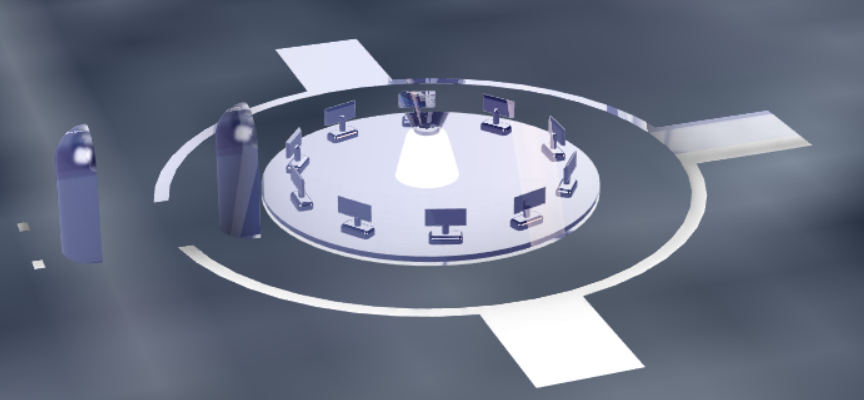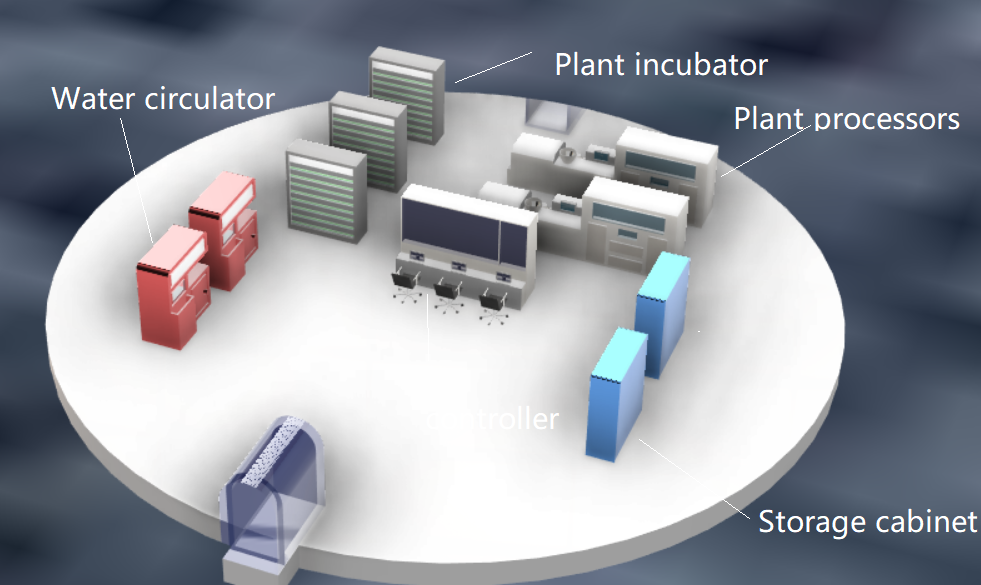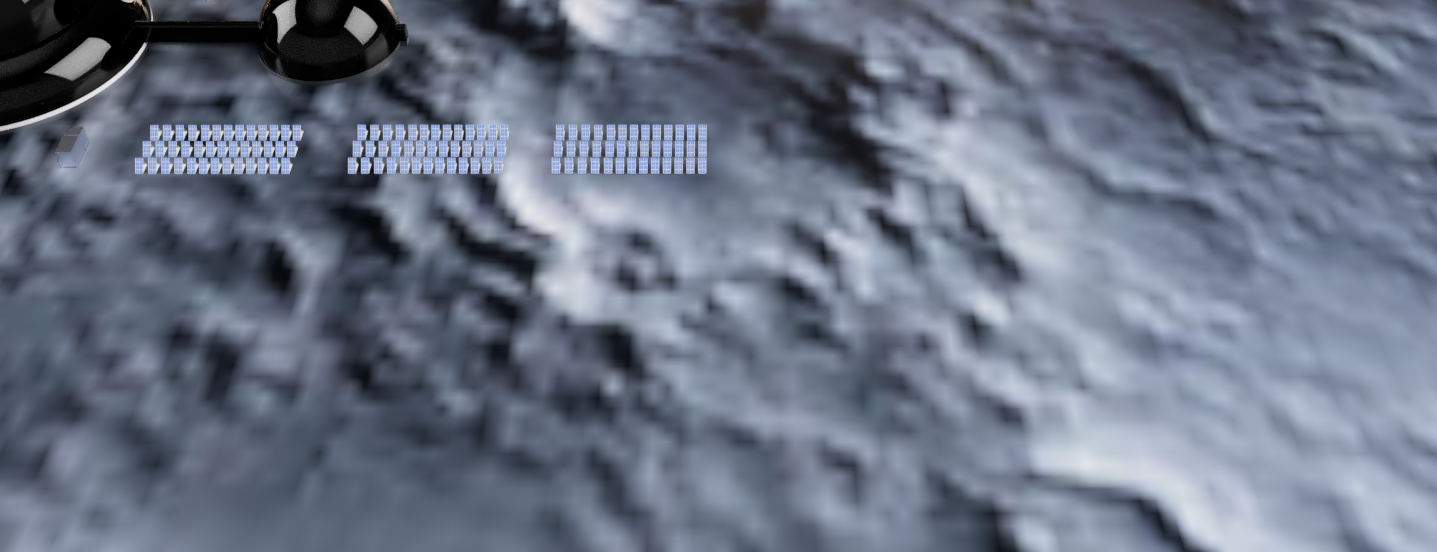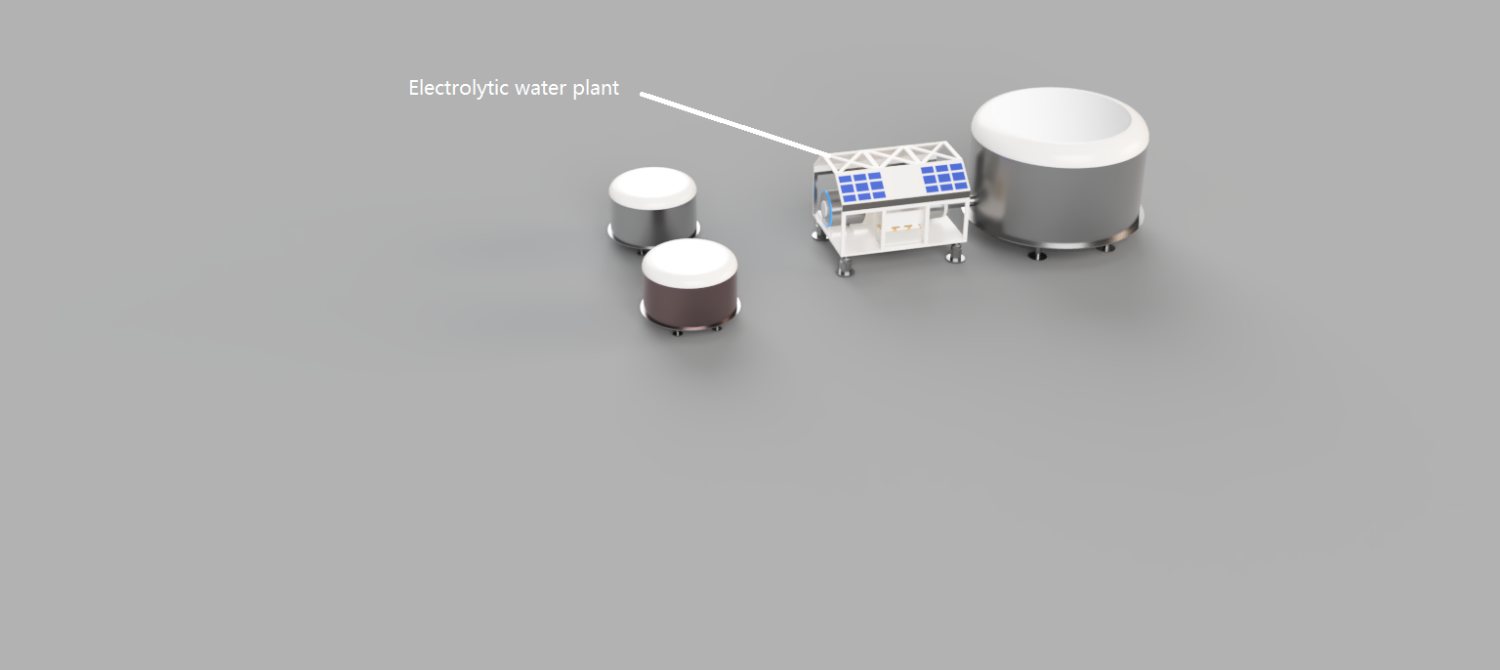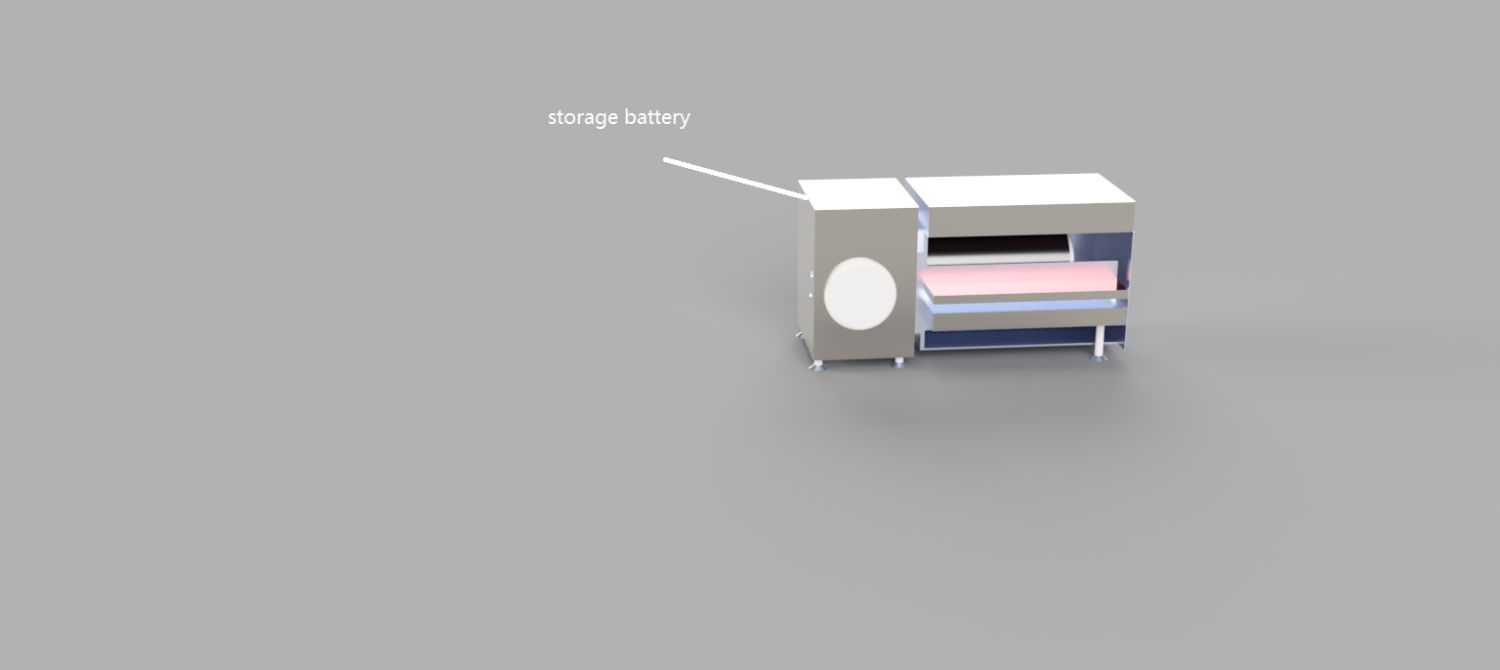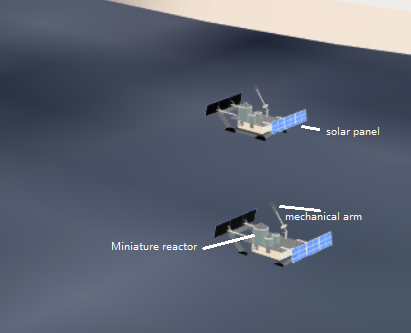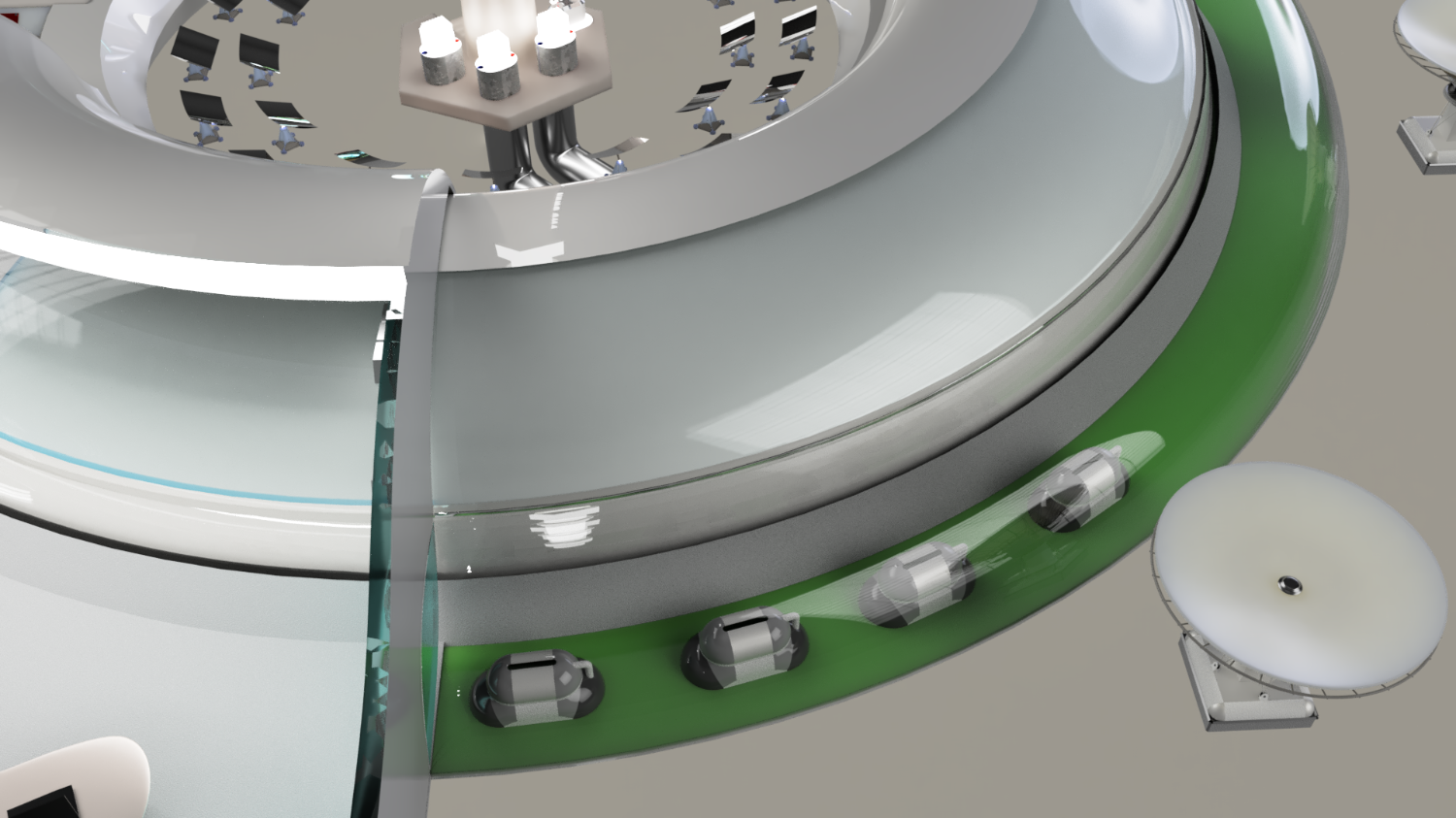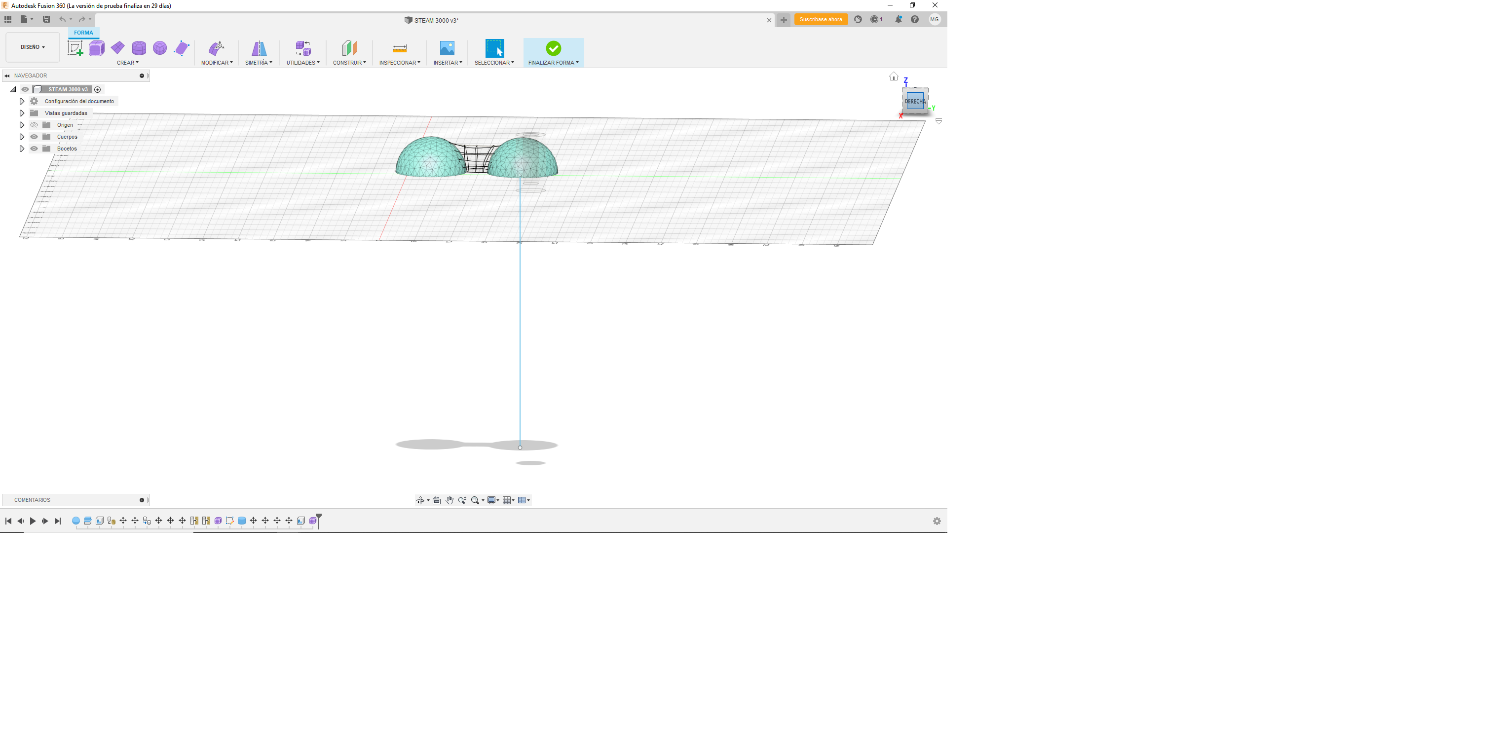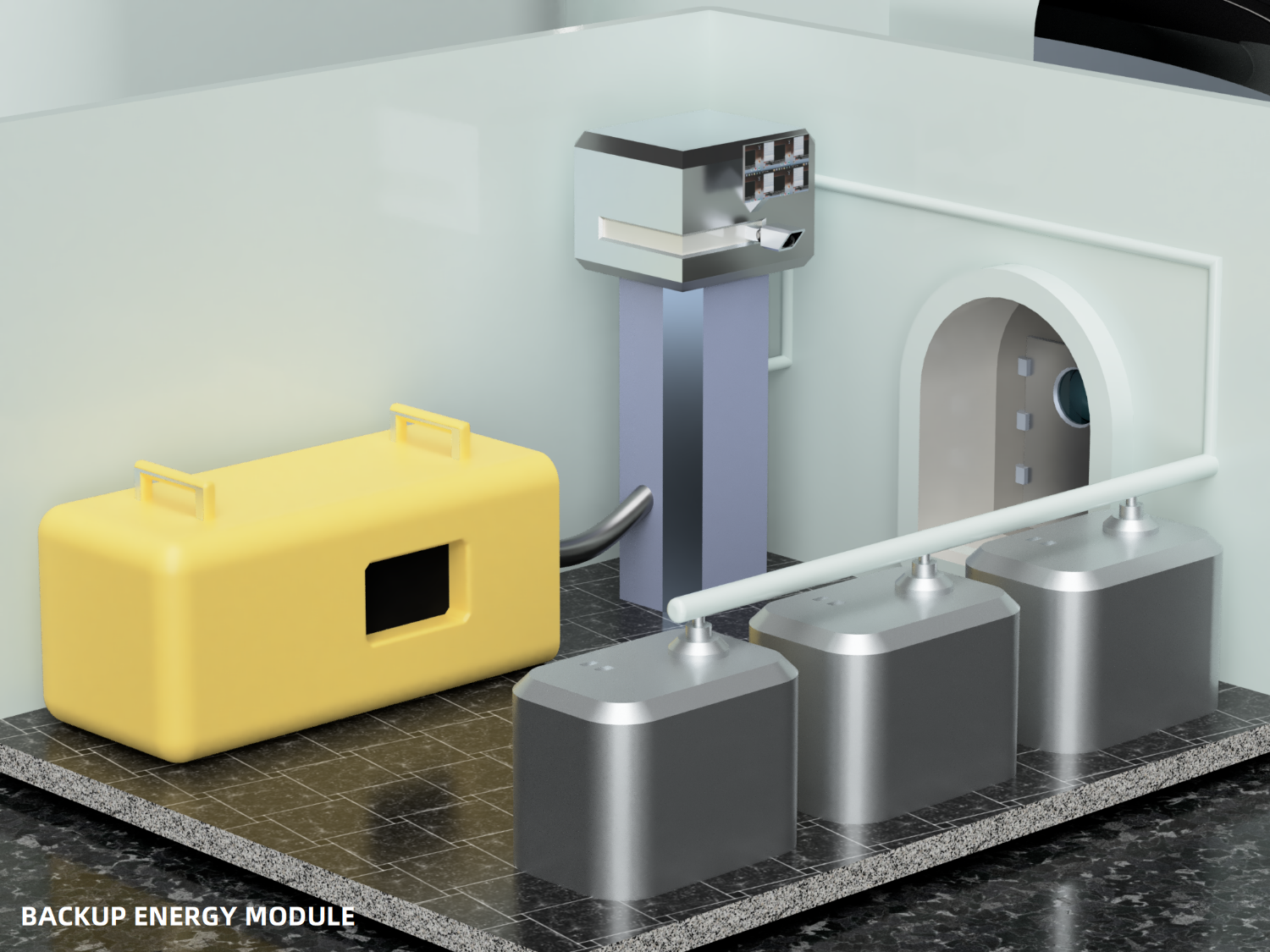Moon Camp Pioneers Gallery 2021-2022
In Moon Camp Pioneers each team’s mission is to 3D design a complete Moon Camp using Fusion 360. They also have to explain how they will use local resources, protect astronauts from the dangerous of space and describe the living and working facilities.
Team: OSSForMe
郑州轻工业大学附属中学 河南省郑州市 China 18 4 / 0
External viewer for 3d project
|
Project description
Our base will have a residential module, an energy module, a greenhouse module, a laboratory, and an observatory. All modules, corridors and airlock walls (except docking ports for the vehicle and spacesuit) are made of composite materials and are controlled by thermostatic modules. In terms of vehicles, we have 3 excavators for water ice mining, construction and excavation operations and 6 manned vehicles for outdoor exploration, 3 ground detectors, and 3 leap detectors. The construction of the base is divided into three phases. In other words, we would need three unmanned flights. Our base can house six long-term astronauts. In the first phase, food must be transported from Earth, and the base is not yet self-sufficient. Most importantly, infrastructure will be built on the moon (strengthening key areas, finding local resources…). . In the second phase, it will produce its own food and water, and will even be able to supply these raw materials to camps, and research will be in full swing. In the third stage, it will be fully self-sufficient and become a prototype lunar colony. |
|||
|
2.1 Where do you want to build your Moon Camp?
We will locate our base near the South Pole region of the moon. We chose this location because there is plenty of sunlight available, which is our main source of energy (about 86-94% of the time per cycle). In this area, we can find many craters with ice. We will use this ice to supply water to our base. And, for landscape reasons, we’ll be able to build an observatory that can observe cosmic landscapes that aren’t (or aren’t) visible from Earth. 2.2 How do you plan to build your Moon Camp? Describe the techniques, materials and your design choices.
Building technology: We plan to use 3D printers to turn lunar soil into building materials. Construction materials: Due to the lack of air on the lunar surface, the high level of cosmic radiation, and the damage from small meteors, the camp is made of moon-friendly composite materials (lunar soil mixed with urea and naphthalene superplasticizer to form “Lunar concrete” to construct the theme structure, using materials transported and collected from the moon, Adopt double-layer polyimide – mica composite film to make sealing isolation protective layer to form each function module, corridor, etc.). Most of the materials used for construction on the moon are made from local resources, i.e. lunar soil, rocks, etc. The metal material is made directly from lunar soil. When composite and building materials are available, underground camps can be expanded on a large scale. 2.3 The environment on the Moon is very dangerous for the astronauts. Explain how your Moon Camp will protect them. (maximum 150 words)
To prevent radiation, the outer walls are thickened and special radiation-proof materials are used (” lunar concrete “made from the lunar soil with urea and naphthalene-based superplasticizer). To protect the astronauts from the vacuum of space, our modules are completely enclosed. If one of the modules loses pressure, the astronaut can still exit the module through the corridor. In order to protect the modules from meteorites, we will create a protective layer on the surface of the camp using a thin shell structure, and add mechanical devices based on anti-damping principle to make the overall structure of the base more stable and resistant to micrometeorites. Maintain the same air composition ratio, pressure and constant temperature and humidity as the earth inside the building to provide a good living environment. If astronauts are injured or unwell at the moon camp, their missions will be suspended and they will undergo rehabilitation treatment. |
|||
|
2.4 Explain how your Moon Camp will provide the astronauts with:
|
Water
|
Food
|
Power
|
Air
|
|
At the beginning, astronauts will bring some water. Once the base is complete, we will start digging for water from the nearest known location, such as Shackleton Pit. |
During the first period on the moon, food would be brought from the Earth. In the second stage, we can cultivate high-nutrient plants led by Chlorella in the greenhouse module and process them into food. In the third phase, we will use our avionics module, which will provide enough food to extend the duration of the mission. When the greenhouse module is fully completed, it will provide enough food to extend the mission for years. We will grow different types of plants there: grass, some vegetables, sugar plants. |
The Yongdiao Peak at the South Pole of the moon is rich in light resources. According to the authoritative measurement and calculation, the solar power radiation of the moon is 1353W/m2 (numerical analysis of the thermal environment of the lunar surface “journal of astronautics”). Therefore, solar power is the optimal solution to power the moon camp. Solar power generation has been used on earth for many years, with a relatively mature technology, and the waste generated by the lunar soil and oxygen production device can be used as the material for solar panels, greatly reducing the cost of rocket transportation. When water ice is mined in large quantities, hydrogen can be made to fuel future rockets on the moon. |
In the first stage, we’ll get oxygen by extracting it from the regolith. After heating and melting of lunar soil or rock, electric electrolysis can produce oxygen, which will be released from the melt in the form of bubbles. When heated to 1600~2500℃, oxygen-containing rock can be decomposed to produce oxygen, and by the way, high purity silicon and other metals or metal materials can be made. In the second phase, we introduce carbon dioxide and water, and the plants convert these two substances into food and produce some oxygen. |
|
2.5 Explain what would be the main purpose of your Moon Camp.
Our moon camp has multiple purposes: Our main purpose is to pave the way for lunar colonization, so as to reduce the ecological burden on earth and expand the living space of human beings. Commercial: allowing commercial companies to use our landing sites to land their probes, advertising for companies. Science: A laboratory at our lunar base camp provides a more extensive space for the storage and manufacture of specific scientific materials; More importantly, there is an observatory, which can observe the cosmic landscape that cannot be observed or is not well observed by the Earth, and some probes are constantly exploring the moon information, paving the way for the future lunar colonization. Infrastructure: We will build roads around Shackleton Crater to connect future colonies. |
|||
|
3.1 Describe a day on the Moon for your Moon Camp astronaut crew.
Early in the morning, the astronauts get up, tidy up the bed, enter the bathroom, with special toiletries to clean. Then go to the catering area for a well-balanced airline meal. After putting away the cutlery, the astronauts entered the energy zone, control center and so on to check one by one to ensure the normal operation of the whole camp. Then the captain assigned tasks to the team one by one, and they went into the energy zone, control center, ecological park and other daily research work inside the camp. At noon, you will enter the catering area and eat airline food. After the meal, the astronauts will have a rest period, followed by a period of exercise, after which they will continue their normal work tasks and dine in the dining area in the evening. After dinner the captain summed up the day and held a meeting. And then there’s a period of exercise, and then there’s a period of rest, and then washing up and sleeping. During the designated rest time, you are free to choose your favorite entertainment life. You can make video calls with your family or colleagues, watch movies on your laptop, surf the Internet, or do something else. These recreational activities can let the astronaut relax his mood very well, maintain cheerful psychological mood. To keep astronauts healthy in lunar gravity, everyone has to do about 3 hours of exercise in our gym. To maximize the output while the solar panels generate energy, we’re going to have two astronauts stay awake while everyone else is sleeping. If something serious happens, all astronauts must stay awake. |
|||


